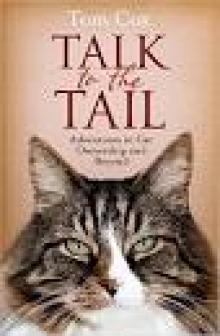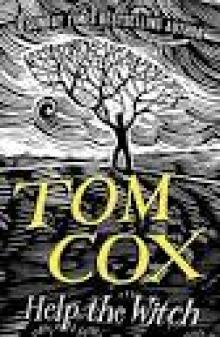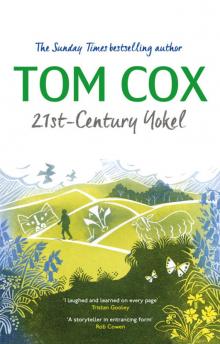21st-Century Yokel Read online
Page 3
I went inside and checked the results of last night’s surveillance: no badgers. I got the impression that they had become wise to the trail cam. All my latest footage had turned up was another mouse, and even she had appeared a bit self-conscious. I’d woken in the night, looked down from my bedroom window and seen one of the badgers skittering across in front of the doorstep in what could easily be perceived as a cocky dance, yet, even though I’d scattered peanuts and dry cat food in the perfect place and aimed the trail cam directly down the line of their diagonal path . . . nothing.
Looking at that diagonal path – more multispecies A-road than badger byway – was instructive. It was a reminder that most of the paths in the British countryside were not planned by people in suits with clipboards and agendas; they were made organically, by silent, casual committee: a mixture of animals and humans deciding on the best route to suit their needs and forging defiantly ahead. Desire lines is what they call them in the transportation planning industry. I recently spoke to a woman from Maryland, on the east coast of the United States, who’d never visited rural Britain and was astounded to learn that I could walk in the countryside and get up close to cows and sheep that did not belong to me. Coming from a place where most of the greenery and all of the arable land is sectioned off from walkers, she found it an entirely alien concept. It’s conversations like this that make you realise how privileged we are in the UK to have the green lanes, bridleways and footpaths that we do, allowing us to clamber over stiles nibbled by horses into farmyards filled with inquisitive guineafowl or wild meadows where we might surprise a pheasant and it might surprise us back with a loud ch-kooick as it explodes from the grass. Later during the morning on which my conversation with Ian the plumber had taken place I set off on foot down to the river and in what seemed like no time at all was cuddling a large, docile ewe, a sheep I’d taken for a troublemaker the first time I’d seen her, waiting for me on the path above the Dart, but who it turned out just wanted to say hello and find out whether I needed anything. I told the sheep that she was the best sheep I’d ever met, then immediately felt bad because it was something I’d told lots of other sheep, even though this time I genuinely meant it.
I believe it is my duty to get to know my immediate natural world thoroughly, to not be complacent about it, as it’s the least I can do as a gesture of thanks to it for being kind enough to allow me to live within it. My need to explore my home county on foot – sometimes as much as sixty miles a week of it – also comes as a natural by-product of being one of those odd people who are excited by the design of an old kissing gate, a small pool in a depression at the top of a tor or the blotched patterns lichen makes on a boulder in a spinney. Not everyone will impulsively go ‘Ooh’ upon seeing moss and navelwort laying siege to an old wall – they will need some sort of violent modern stimulus to be prompted to lose control in an equivalently undignified way, and I accept that totally – but I am someone who does. I think my time on local footpaths, and in various places just off them, is also a reaction to something I’m told repeatedly about the way I should live, almost every time I turn on any electronic device with a screen. The whole world is there on the screen, for the taking, and a hive of demanding voices encourages us to absorb as much of it as possible, and keep up with it frantically, as it moves on, and it is always moving on, more swiftly and forgetfully than ever. If you’re someone with a thirst for knowledge, you can very easily get sucked into the excitement of this, before you realise it’s a flawed, impossible pursuit, and it’s not making people, en masse, any more knowledgeable. What it instead often leads to is a brand of knowledge that’s thousands of miles wide and half a centimetre deep: a pond-skating mentality of misleading screenshots and thinly gleaned opinions and out-of-context sound bites and people reading hastily between the lines while forgetting the vital thing you also need to do when practising that skill is to read the lines themselves. The idea of getting to know an area of limited size extremely well works as an antidote to this, and even in a very small area there is always more to know. You can reduce your space right down – to one hedgerow or wall or flooded out-of-use tin mine – and there will never be enough time to know it all.
It could be argued that I have a particularly fertile area in which to do my local investigations, but I’ve done it in another very different place too: Norfolk. And when revisiting the places in the East Midlands where I grew up – rural areas, but localities defined not by hills and rivers and water lanes and creeks but by parks and chip shops and factories and railway cuttings – I’ve been drawn to do the same, to start looking behind the obvious in a way that never would have occurred to me in the distant past: at the thirty-mile view from the hill above your aunt’s old semi and the haunting tower at its hazy edge, at the lovingly designed pattress plates on an abandoned brewery or the stag beetles beneath some bark on an eerie broken oak in a copse behind a litter-strewn lay-by not far from the motorway junction people take if they want to go to IKEA.
This part of Devon isn’t perfect either. Just like other parts of the British countryside it has litter and barbed wire and and recklessly driven cars and motorbikes and horrendous fuckwads who put their dogs’ shit in plastic bags then leave the bags on tree stumps and in hedges. It contains people too, contrary to popular belief: quite a lot of them (I’m not counting the horrendous fuckwads who bag up and leave the dogshit as people). Without ever really intending to do so, on the walks I take nearer my house I regularly update an internal top three of regularly spotted walking strangers. As of May 2016, this read – and had read for several weeks – as follows:
1. Lycra Santa
2. Man Who Narrates Events To His Bulldog As They Occur
3. Woman Who Never Says Hello Back To Me And Smiles Like She Has A Little Secret
May is the time when the bluebells in the woods near my house take over from the primroses. In a path on Lustleigh Cleave redolent of old faery activity – the kind without gossamer wings or wands – I ate one of the last ones of the year, on Suzi’s urging, and it tasted not unpleasantly of flour and untart lemon. In Devon – less so than in the part of Norfolk where I used to live, where they are far thinner on the ground – I think of primroses as heralding spring, more than the daffodils that emerge in late January, which are often just early tester daffodils, sent out on suicide missions. In the folk song ‘The Blacksmith’, written at an unknown point by an unknown author, but brought into the modern age transcendentally by Planxty and the lesser-heard artistically bold initial incarnation of Steeleye Span during the early 1970s, the narrator sings of her lost metal-forger-love’s ‘good black billycock’ hat ‘crowned with primroses’, and I can see how such attire might be an extra bit of salt in the wound of losing him. She also sings that, were she with the blacksmith, she’d ‘live for ever’. Part of the magic of primroses is that you never see them die: in decline they are simply subsumed amid the growth spurts of lankier vegetation until one day it hits you that they’re no longer there.
Near a bank of them still fighting valiantly for space beside a fish-ladder tributary that makes a no-nonsense dash down to the Dart, I ran into my gardener friend Andy.
‘Oh, I was just thinking about you,’ Andy said.
‘Really?’ I asked. ‘Why was that?’
‘Someone’s nicked a shopping trolley and dumped it down there on the path. I thought to myself, If Tom’s heading down here today, he’s going to walk straight into that.’
I was touched that Andy would think about my welfare in such a way. His comment was also perhaps indicative of the fact that I had now lived in this part of Devon long enough for my rampant doziness to have become fairly common local knowledge. My status as someone who is a very observant person in some ways goes hand in hand with my status as someone who is a very unobservant person in lots of others. Combine this with my short-sightedness, and if I’m walking the paths at the edge of my local town, Totnes, at the same time as someone I know, there’s a high probability
that they’ll see me before I see them. This can present a problem. I’m always worried about being perceived to be ignoring friends or acquaintances when in fact I’m just off in my own myopic dream universe. But I can overcompensate too. When a well-dressed woman in late middle age walked down the river path towards me one day last spring with her arms stretched out in greeting I readied myself to say hello. Was she a friend’s mum I had been introduced to at the pub a few weeks ago? The industrious widow I did stone-row conservation up on the moor with two winters ago? As she got within a few feet of my face I realised that the answer was an emphatic no to both questions. I had definitely never met this person before.
‘Can you tell me,’ she asked, arms still open, then paused, and I got my geographical head on, poised to offer succinct directions – perhaps to the castle, or the wharf, or the medieval hall a couple of miles up the river, ‘whether Nietzsche was Russian or German?’
‘German,’ I answered.
‘Well done!’ she said and walked briskly on.
A few weeks later, buying avocados at the greengrocer’s, I ran into the woman again. She didn’t appear to recognise me from our previous encounter but asked me why it said ‘Traffic’ on the T-shirt I was wearing. I told her that they were one of my favourite bands.
‘Do you go to Glastonbury to see them?’ she asked.
‘No, I haven’t been for years,’ I said. ‘And they split up in 1974.’
‘Is that your wife?’ she asked, pointing to a woman I’d never seen before, who was standing in the doorway, minding her own business.
‘No,’ I said. ‘I don’t have one of those.’
‘And if you keep wearing T-shirts like that, you never will!’ she said, and walked off.
It has been claimed by some people reasonably close to me that I have a knack of attracting society’s uninhibited exiles and eccentrics while going about my business. I refute this allegation, just as I did when my girlfriend made it in 2012 on a Norfolk towpath, seconds before a stranger carrying a large fish ran excitedly up to us and said, ‘Please can you take a photo of me and my fish?’ to me. Spring does tend to have a giddiness which brings out a certain unsuppressed behaviour in many sections of the Devonshire population though, and I often find myself close witness to it. It was in spring that a dreadlocked lady in a smock approached me in the garden of my local pub and showed me a stain on the tray she was carrying which she claimed was the representation of her previous warrior self from untold centuries past. It was also in spring – this latest one, again – when Robert introduced himself on a sunken lane a few miles from my house.
The weather was bright, though cool, the day I met Robert, and a lot of people were out. I’d already passed Lycra Santa and Man Who Narrates Events To His Bulldog As They Occur by the time I curved up a long sunken lane leading away from the south side of Totnes. ‘It’s cold, isn’t it?’ I had overheard Man Who Narrates Events To His Bulldog As They Occur saying to his bulldog. ‘I bet you wish you had warm clothes. We’re going to the supermarket soon, then we’re going to John’s house. This tree just here is weird.’ But by the time I was in the long sunken lane I was very much alone, protected by its quiet green banks from the clanking of the industrial estate half a mile away and the slick gravelly zip of traffic along the Newton Abbot road. I passed a tall ivy-fringed stone trough in the hedged bank that always looked like a risky promise of an alternate dimension, then made my way over the brow of the hill down to where the walls of the holloway get more rocky and subterranean and turn a dreamlike dark green. A man walking in the opposite direction stopped in my path, grinning. Seeing that there were fewer than eleven visible buildings nearby, I said hello and he returned my greeting. In my early days as a countryside rambler I’d be tentative about saying hello to strangers – I’d try to assess them first, see if they were ‘Hello!’ kind of people. Now I tend to say it to everyone as it makes life simpler and less angst-ridden. Most people will say it back, and if they don’t they’re probably a serial killer, and you’ll be dead soon anyway. The exception to this rule is if you’re in an area where there are more than eleven visible buildings nearby: the time in 2011, for example, when I walked past another lone man in his thirties on a walk on the outskirts of Long Stratton in Norfolk, and the two of us couldn’t quite work out if we were in a countryish enough area to say ‘Hello!’ so mumbled a half ‘Hi!’ to one another, then shambled off, saturated in an awkwardness that would probably still be with us, in some small but significant way, for the rest of our lives.
The man on the sunken lane, fiftyish and dressed in very colourful and expensive-looking branded outdoor clothing, seemed keen not only to say hello but to stop and chat. He introduced himself as Robert. ‘I saw you over on the other side of the river earlier,’ he told me. ‘I said to myself, He’s not a walker, dressed in that duffel coat, but . . . you are! Look at you.’
I followed his instructions and looked at me. I didn’t wear my duffel coat all that often while out on hikes but had never viewed it as a serious impediment to getting about in the countryside on foot. To Robert the fact that someone should be able to negotiate hills, stiles and footpaths wearing such a garment was clearly a small miracle. He shook his head and gasped, like a man who’d seen a deer in a skirt. We talked a little about routes we’d enjoyed in the area and he asked me what I did for a living and I tried my best to tell him. He explained that he had made a lot of money from property development, taken early retirement, and his expensive walking equipment was part of his way of spending the inheritance of his offspring, who no longer spoke to him and, in his words, ‘didn’t deserve it’. As if to compound this abrupt, unexpectedly uncomfortable turn the conversation had taken, another walker passed us – a woman in her late twenties clad in a long thick cardigan and bobble hat – and Robert immediately began shouting across to her about my ‘great job’, which I’d in fact just told him was my old job, which I’d emphatically and with a considerable amount of relief quit the year previously. He then instructed her: ‘You need to get with this guy!’ Considering the fact he’d clearly never met her before, what he was saying and the various assumptions it betrayed, her response – to smile awkwardly and step up her pace just marginally as she passed us – was an impressively restrained one. I offered her an awkward smile of my own, which I hoped communicated I do not know this man and am very sorry about the words that keep coming out of his mouth, then made my excuses to Robert and walked on, passing beneath a railway bridge on whose roof grew lichen that looked halfway between stalactites and loft insulation, then up a steep lane to a spot where, the previous year, I’d seen a small, pristine, black rabbit run across the tarmac in my path.
Is there a proper way to be a walker? Apart from showing the fitting amount of consideration to your environment and your fellow humans, I don’t believe there is, and that’s something I like about it. Walking tends to be goal-free in any official sense, yet can be associated with any number of small unofficial personal goals. Some clothes are more practical for it, without doubt, but it’s entirely up to you what you wear. Something that changed about my walking habits between 2015 and 2016 was that I became a bit better at watching and listening, but I don’t think even this represents the ‘right’ way to walk; it’s just something I wanted to try. I wasn’t watching or listening too well the day on the hillside overlooking my house in 2015 when I almost trod on the young badger, or when I saw the back end of that pristine black rabbit disappear into the hedgerow, but I started making a bit more of an effort shortly after that. A few weeks later, I was heading through a kissing gate from a twisting path to a field when I heard a miniscule anguished squeak coming from the bushes behind me: something that, in my previous, less present-aware state, I might not have picked out of the light din in and around a wildflower meadow in midsummer. I slowed down and listened some more, and in under a minute, two furry animals, each not much bigger than one of my feet, locked together, spun onto the path behind me, at least one of
them in extreme pain. One of these animals was a young rabbit and the other was a weasel. I’d watched rabbits suffer a few times in the jaws of my cats but this was another level of ruthless. Seeing the nameless dark burning in the weasel’s eyes and the shrieking rabbit in its jaws, I momentarily became the rabbit and the weasel became the headlights.
What happened next astonished me further still: a larger rabbit, bouncing out of the undergrowth and hurling itself at the weasel. There was something deeply, heartbreakingly powerless about the gesture, but it was just enough to break up the original ball of weasel and rabbit. As they separated, all three creatures noticed me for the first time in my static, mesmerised position, not more than eight feet away. The adult rabbit hopped into the bushes, its offspring flopped and writhed behind it, probably mortally injured, until both were out of sight. The weasel made a fast-forward creep in the other direction, pausing and getting on its hind legs for a second to peer at me in a way that suggested it blamed me for everything and was wondering, just for a moment, if nipping over and disabling my spinal cord in punishment was a viable option. I sat quietly on the grass, and five minutes later the weasel re-emerged, scuttling across the path like a cackling villain in a Hanna-Barbera cartoon, confirming everything we know about the etymology of the word ‘weasel’. I heard nothing more. I wondered about looking for the young rabbit and putting it out of its misery. I decided not to, not just because such a prospect filled me with dread but because I had no place interfering in any part of this episode. I had been in a slightly fragile state of mind on the day of the weasel’s attack, and for the ensuing twenty-four hours I could not help returning repeatedly to the image of that mother rabbit flinging herself out of the bushes, doing everything in her power to save her offspring, even though what she had in her power was virtually nothing: the impossibly touching, doomed heroism of it. A small part of me wished I’d had my phone with me and filmed it but then I realised I didn’t wish that at all. The Internet just conned me into wishing it, because the Internet knows that humans like to share stuff, and that sharing stuff often comes from a kind place and carries the promise of bringing us all closer, so it gets us all addicted to the process, but leaves us ultimately emptier as a result, hovering in a state of non-presentness, getting nostalgic for stuff that happened barely any time ago that we didn’t even take the time to properly absorb when it did happen, skimming across everything, not quite fully experiencing any of it. But the Internet is also teeming with good intentions and seductive promises, and that is the problem.

 Ring the Hill
Ring the Hill Talk to the Tail
Talk to the Tail Help the Witch
Help the Witch Educating Peter
Educating Peter Nice Jumper
Nice Jumper 21st-Century Yokel
21st-Century Yokel Bring Me the Head of Sergio Garcia
Bring Me the Head of Sergio Garcia The Good, the Bad, and the Furry
The Good, the Bad, and the Furry